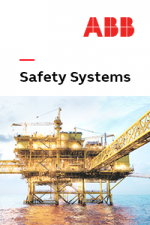- Russian Dam Disaster: Assessing the Cost of Failed Safety Practices
- Analyzing the Human Element of the Russia Dam Disaster
- Turbine 2: How a Track Record of Uncertainty Led to Disaster
- Russian Dam Disaster: A Reckoning for Bypassed Safety
- When Running People Past Their Breaking Point Effects Safety: The Bayer Crop Science Incid…
How a Past Chemical Plant Disaster Offers a Vision for an Altered Industrial Safety Future: T2 Laboratories
When most process safety incidents occur, anywhere in the world, it is never just one miscue that brings about the disaster, but, rather, a series of mistakes or shortcuts either introduced, or that build up as a cumulative effect over time.
The runaway reaction that occurred at T2 Laboratories December 19, 2007, is a perfect example. The massive explosion that occurred on that day, which resulted in the deaths of 4 people, the injury of 32 additional individuals, and the destruction of several nearby businesses was not the first unplanned exothermic reaction the chemical maker had experienced. In fact, three of the first 10 batches of the methylcyclopentadienyl manganese tricarbonyl (MCMT) the company produced resulted in unanticipated exothermic reactions. These types of reactions occur on a worldwide basis when chemicals are not properly contained or controlled and can involve many different types of chemicals beyond just MCMT.
In order to learn from this catastrophic event, the industry needs to learn from the mistakes made and improve education and process control to the point where emergency preparedness is front and center whenever new processes are developed or old processes are refined.
In the case of T2 Laboratories, the first full-scale batch of MCMT T2 ever made on January 9, 2004 resulted in an unexpected exothermic reaction. T2 noted the anomaly, and adjusted the batch recipe and production procedures to include reactor cooling. Then they moved on to produce batch 2, batch 3 and batch 4.
Between February and May 2004, T2 manufactured nine more MCMT batches, adjusting the recipe and procedures between batches. Yields varied between product that was not saleable to product that was about 70 percent saleable.
Along the way, batch 5 resulted in an uncontrolled runaway exothermic reaction in the first step. The same occurred with batch 10, where the temperature also increased beyond expectations due to the exothermic reaction. In retrospect, learning from those unplanned reactions could have presented a red flag. What caused the runaway reaction? Too much of one chemical or another? Was the timing off? What actually happened and at what scale? How was the reaction stopped? What were the procedures to stop the reaction? These are all questions company officials and their safety experts should have asked.
Instead, in their zeal, to produce saleable product, the company pushed forward experimenting with the proper recipe and process. In essence, the testing process and the production process were one and the same.
Another early warning sign involved the fact that each of the unplanned exothermic reaction incidents occurred during the metalation stage (the first part of a three-part process), and in each case the batch recipe was slightly different.
On May 24, 2004, following Batch 11, T2’s owner (a chemical engineer by trade) let investors know that the company was in full-scale MCMT production. T2 continued producing and selling MCMT, relying upon sales to pay for more raw materials. On July 28, 2005, just a little over a year after going into full-scale production, T2 increased its batch size by 33 percent.
Despite the fact that the process was increasing in complexity, the documentation of the process seemed to diminish. No records exist of additional chemical or process analysis conducted as part of this recipe change, which introduced significant new risks. A greater volume of reactants increased the energy the reaction could produce, and likely altered cooling and pressure relief requirements.
At this stage, had a hazard and operability study (HAZOP) been performed, a recognition for a need for testing to determine the thermodynamic and kinetic nature of the reaction would have resulted. The company could then have built an action plan to protect against any runaway reaction.
However, this was not the case. Early warning signs did not result in a halt of production, did not spawn any detailed investigations, and did not drive any redesign in the process. How many other companies who have experienced close calls are not stepping back and reviewing the details of what went wrong? These will be the future disasters of tomorrow.
To learn more about industrial process safety best practices, click here.


